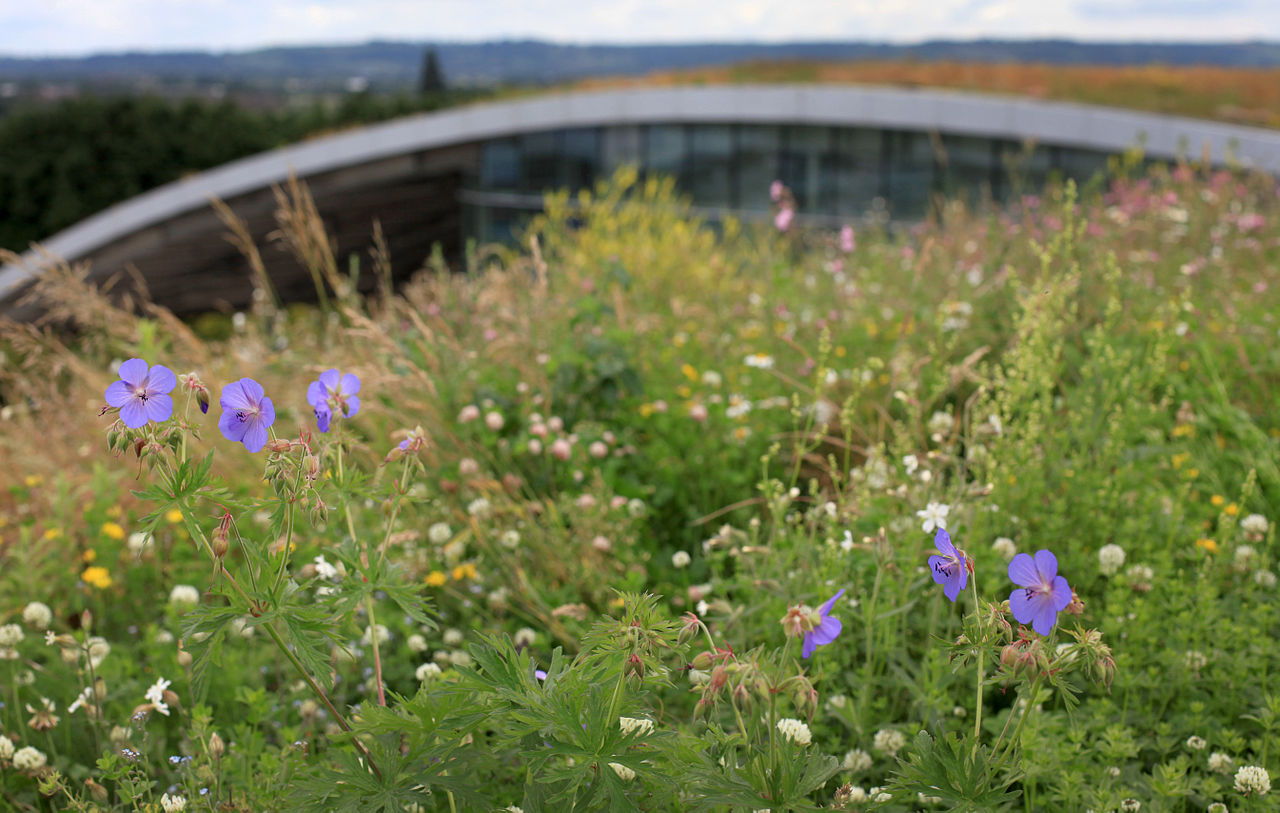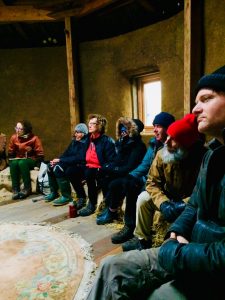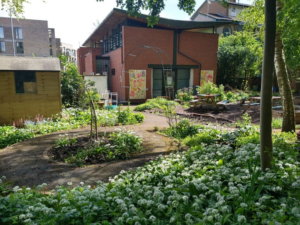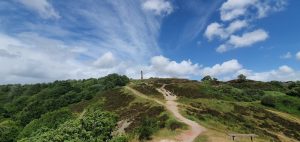Extracts taken from the website of the UK’s National Centre of Excellence for Green Roofs (Department of Landscape, University of Sheffield). Visit www.thegreenroofcentre.co.uk for more information.
A green roof or living roof is a roof of a building that is partially or completely covered with vegetation and a growing medium, planted over a waterproofing membrane. It may also include additional layers such as a root barrier and drainage and irrigation systems. Container gardens on roofs, where plants are maintained in pots, are not generally considered to be true green roofs.
Green roofs last longer than conventional roofs, reduce energy costs with natural insulation, create peaceful retreats for people and animals and absorb storm water, potentially lessening the need for complex and expensive drainage systems. On a wider scale, green roofs improve air quality and help reduce the Urban Heat Island Effect, a condition in which city and suburban developments absorb and trap heat. Anyone who has walked across a scalding parking lot on a hot, summer day has felt one effect of an Urban Heat Island.
The layers of a green roof must, like any roof, accommodate drainage and protect the building from the elements with a waterproof membrane. But they also must create a growing area and potentially provide support, irrigation and root protection barriers, while staying as light as possible.
Two types of green roof exist: intensive and extensive. Intensive green roofs are essentially elevated parks. They can sustain shrubs, trees, walkways and benches with their complex structural support, irrigation, drainage and root protection layers. The foot or more of growing medium needed for an intensive green roof creates a load of 80-150 pounds (36-68 kilograms) per square foot.
Extensive green roofs are relatively light at 15-50 pounds (7-23 kilograms) per square foot. They support hearty native ground cover that requires little maintenance. Extensive green roofs usually exist solely for their environmental benefits and don’t function as accessible rooftop gardens.”
There is a great example of a wildflower green roof created on top of a shipping container by Grow Wild you can read how they did it here: “The day we built a wildflower green roof“
Other useful publications accessible on the web are:
The Green Roof Centre and Sheffield University have produced booklets called:
- Habitat Action Plan – Guidance Questions.
- Green Roof Guidelines
A company called Oldroyd have produced a very comprehensive booklet called:
- Creating Effective Drainage for Green and Turf Roofs.

Reproduced with permission of North West Parks Friends Forum







